Teaching is one of the highest paid and most prestigious professions in Bhutan. This recognition helps to ‘attract’, retain and motivate qualified teachers.
Free education
All school-age children in Bhutan have access to free, quality, equitable education, which is considered one of the basic needs required to achieve a measure of collective happiness in a nation.
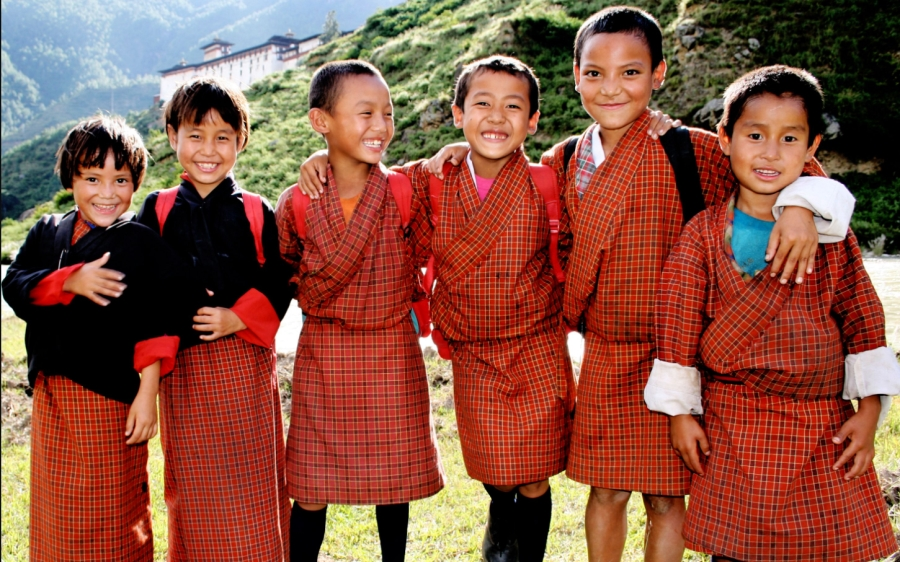
Education in Bhutan is completely free.
Going to school is free, but many people have to walk kilometers to get to school due to the special terrain of this Kingdom (located entirely on high mountain ranges). This shows the determination and spirit of learning and acquiring knowledge of young people.
Mandatory Orientation Training
Children in Bhutan start preschool at age 5, primary school at age 7 and graduate from primary school at age 11. They then move on to secondary school at age 12-13.
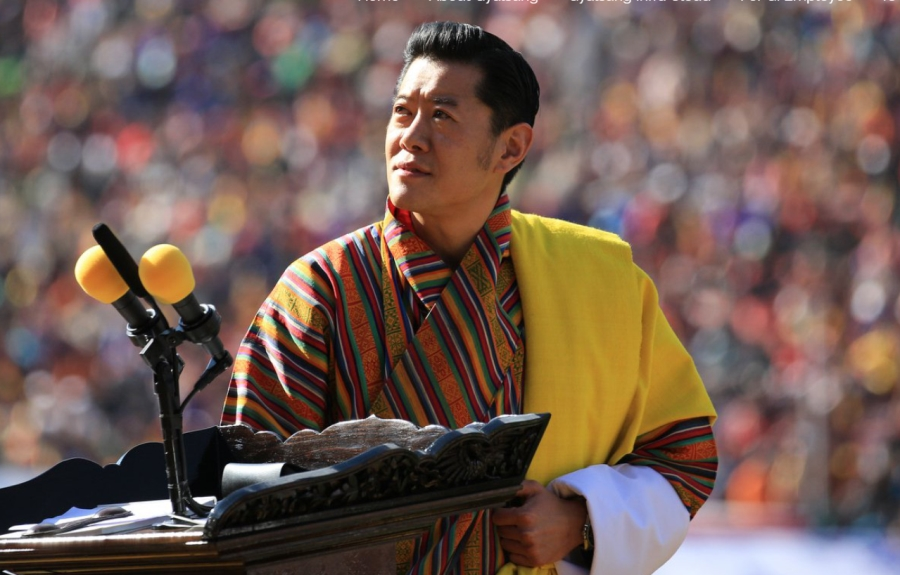
The King of Bhutan's Gyalsung Initiative was announced in 2019
Upon turning 18, students will begin Gyalsung training - an initiative announced in 2019 by Bhutan's King Jigme Khesar Namgyel Wangchuck.
Gyalsung is a one-year comprehensive training program that is compulsory for all Bhutanese youth who turn 18 years old.
The year-long training will include three months of basic military training, followed by nine months of specialized training in a variety of areas, from home construction technology, computers and business to developing skills in agriculture.
Gyalsung's aim is to provide direction and encourage young people to become strong, independent thinkers, capable of serving the country.
At the same time, the training will connect Bhutanese youth together in a common experience regardless of background.
It is estimated that nearly 13,000 Bhutanese youth participate in this course each year.
National costume is uniform
Bhutanese people take pride in wearing their national dress, which also serves as their school uniform. Children as young as five years old wear the national dress in a solemn manner to honor their culture.
Gho is worn by men and Kira is worn by women. Gho is a knee-length tunic and is worn with a belt called Kera around the waist.
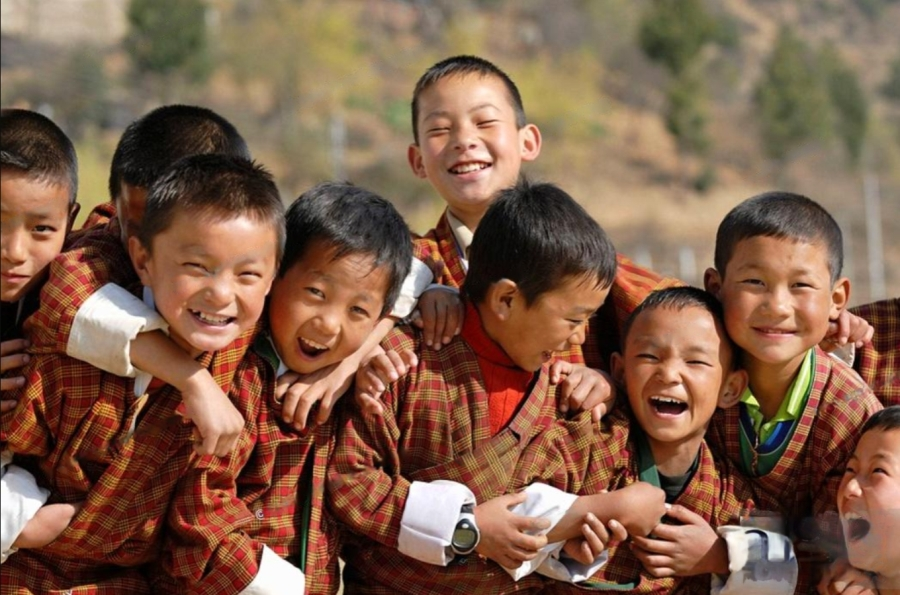
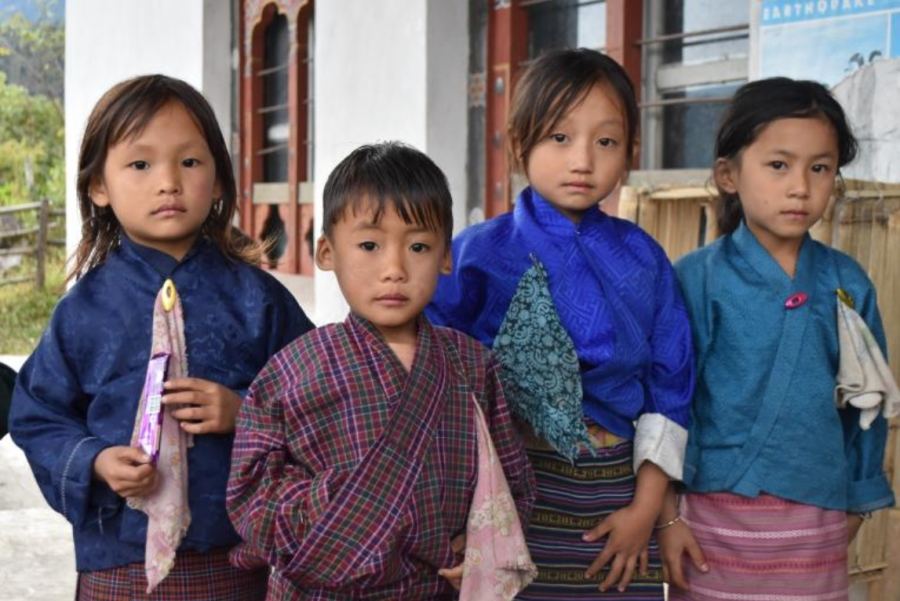
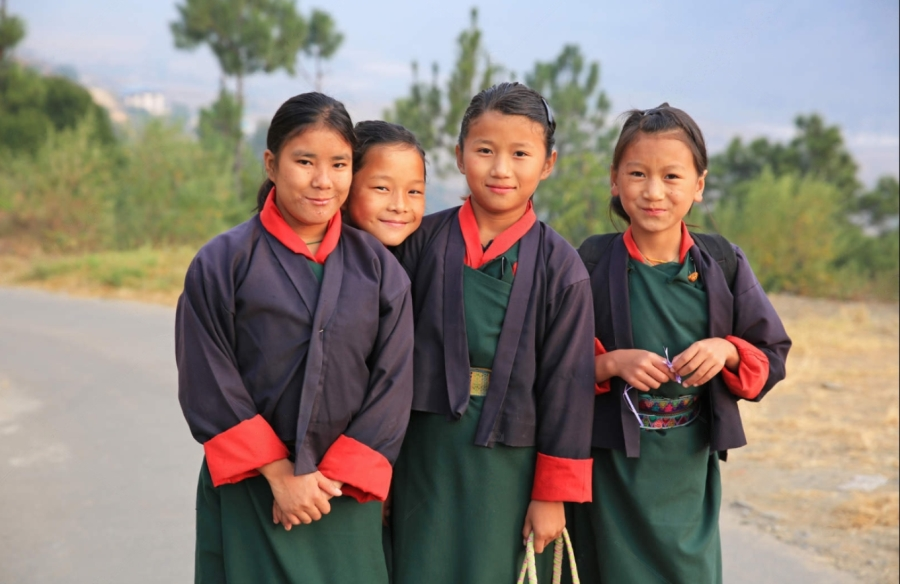
Men wear Gho and women wear Kira
Kira is essentially a rectangular piece of cloth decorated with rich patterns. Women in Bhutan use Kira to wrap around their bodies and fasten it at the shoulder with a silver hook called Koma, then secure it at the waist with a cloth or silver belt.
Morning Gathering & Prayer
Morning assemblies are an integral part of the Bhutanese school schedule. The gatherings are meant to develop a sense of unity and community among students and to reward achievements to encourage them to do better.
However, the most important aspect of the morning assembly in Bhutanese schools is the Jampelyang prayer or Manjushri prayer – the Buddha of wisdom.
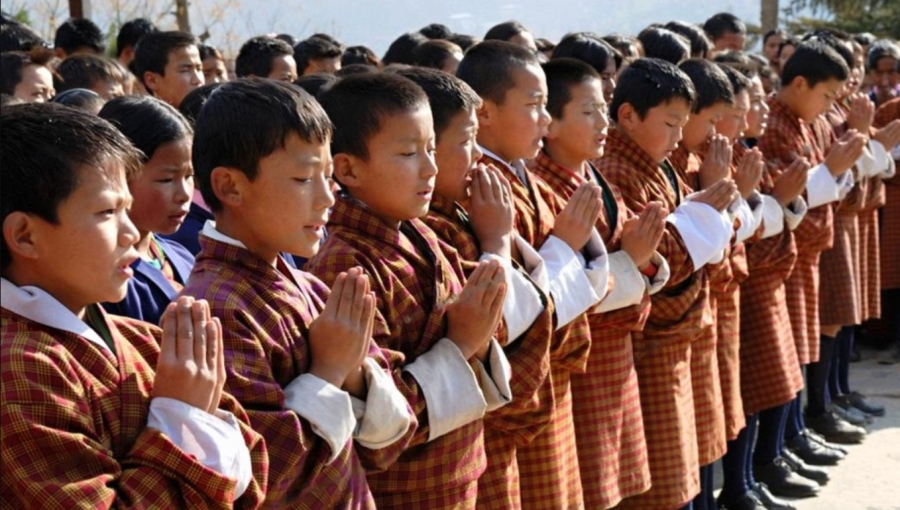
Bhutanese students pray every morning.
Prayer is a daily activity for a Buddhist country like Bhutan. The practice of prayer in schools began in 1975.
Mornings for students from kindergarten to university will begin with prayer. They will continue to practice prayer even after school life ends.
Promote social responsibility
Activities in Bhutanese schools are socially oriented. Schools often have Cultural Clubs to promote the preservation of ethnic culture or Nature Clubs to promote environmental protection initiatives.
Students are encouraged to plant trees on June 2 every year – Social Forestry Day in Bhutan. Students not only plant trees but also take responsibility for caring for them.
Being educated and trained in such an environment helps Bhutanese youth to be more responsible and dedicated to contributing to the community.
According to Vietnamnet